MDRG, BERA, and DISH recently won the "Client/Supplier Collaboration" award at Quirk's The Marketing Research & Insight Excellence Awards. The award-winning collaborating team presented the winning entry to the Insights Association, and we've compiled the case study recap for you here.
Historically, the DISH brand's positioning was based on price, focusing on being a low-cost provider. Several years ago, the brand started to rebuild with the "Tuned into You" brand promise based on the foundational consumer benefits of value, service, and technology.
In early 2019, DISH engaged BERA as their brand health tracking partner. Together, they identified the opportunity to strengthen and build DISH's emotional positioning. As a mature brand in a category that is being revolutionized constantly, having an emotional positioning that can stand out among an increasingly strong competitive set is very challenging.
In building that emotional positioning, DISH wanted to make sure that the positioning would be part of the organization's DNA, not just sit within the walls of the marketing department. It was important that it be activated across all consumer touchpoints within the organization.
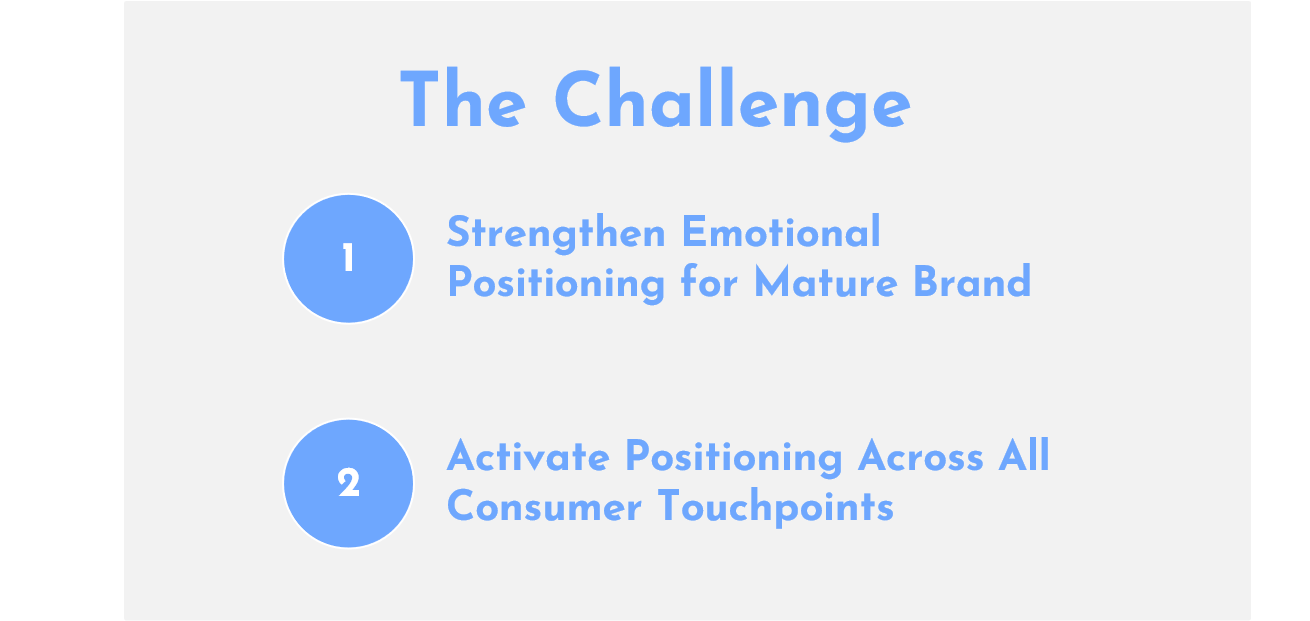
IDENTIFYING EMOTIONAL POSITIONING WITH BERA
BERA has four pillars that sit within brand positioning - purpose, emotional, functional, and experiential. These are the items that drive brand equity based on BERA's model for Brand Love.

Emotion as it impacts brand equity is measured through four metrics - familiarity, regard, meaning, and uniqueness. BERA's proven causal model shows that the right positioning drives equity, and equity drives business outcomes.
DISH's challenge is gaining alignment within the organization that brand equity drives business outcomes. And brand equity is driven by consumers' emotional connection to the brand.
This chart demonstrates the correlation between equity and sales.
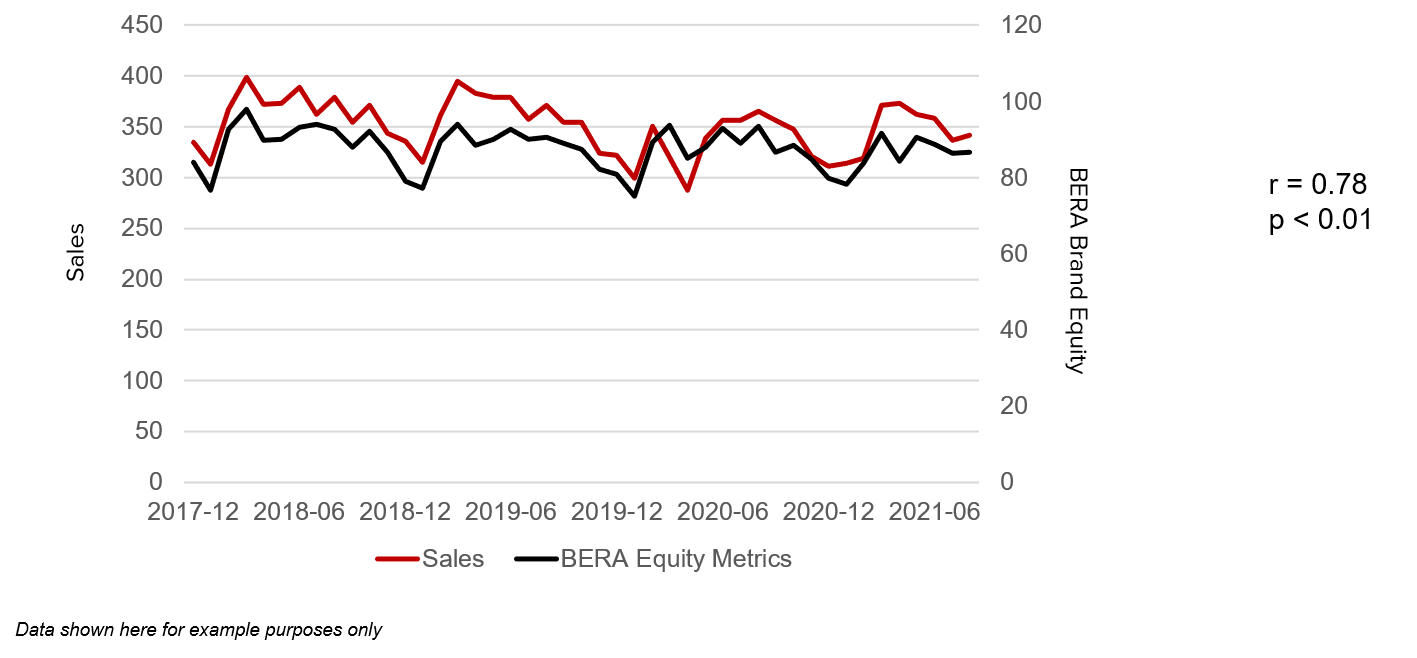
As you can see here, the equity data aligns incredibly closely with the sales data; this is the correlative link between brand equity and business outcomes.
Interestingly, this chart shows that these equity metrics are lagged by one quarter, meaning building equity today builds sales one quarter out. When equity drives sales, marketing teams have ammunition to drive home to other departments that execute correctly and consistently drive sales. Building this positioning is not just nice to have; it's necessary to continue building the DISH brand and the DISH business.
EVALUATING BRAND ATTRIBUTES
With the foundation of BERA's emotional position, a set of brand DNA attributes needed to be identified. Using the set of attributes from Dr. Jennifer Aakers' brand DNA attribute framework, the DISH and BERA team developed a shortlist using the following evaluation criteria:
-
-
- Authenticity: Is it authentic to the brand? Is it aligned with who DISH is and wants to be?
- Competitive Context: Does another competitor own the attribute?
- Headroom: Is there room to grow the attribute?
- Historical Trends: Is this an attribute that DISH could impact or move the needle on?
- Impact on Brand Health: How do these attributes impact different groups of consumers (customers, non-customers, rejectors).
-
MDRG'S METAPHOR ELICITATION UNCOVERS DEEP EMOTIONS
Once the list of attributes was identified, DISH sought to understand what these attributes mean in the context of their category from a rational, functional, and emotional perspective. DISH wanted to ensure that employees and teams across the organization knew how to integrate the proper tonality, messaging, visualization, and actions to communicate these attributes and the brand positioning to consumers daily.
MDRG was responsible for the emotional deep dive to determine how we can better understand these attributes in order to activate across the organization. How can we dig into these attributes and better understand them to activate?
MDRG approaches all of our research design thinking about System 1 and System 2 decision-making processes.

This thinking is from Daniel Kahneman. Many are probably familiar, but System 1 is an automatic, visceral response - that gut feeling. It's non-conscious, so things happen so quickly in your brain that you're not even aware. System 2 is a logical, rational, filtered response, conscious.
MDRG used both System 1 and System 2 in this process. In working with our partners, we had some initial research that gave insight into the meaning of different attributes. Rational thoughts like "they're never hacked" and "constantly update shows and movies" indicate very tactical associations. MDRG sought to understand a layer deeper.
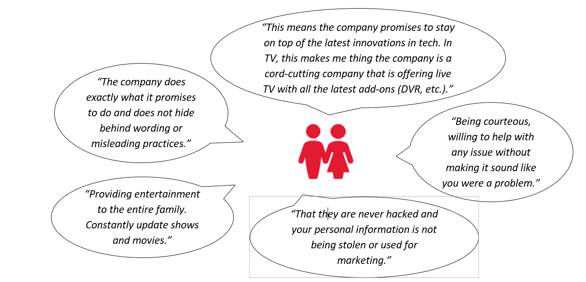
What are the associations consumers have but can't articulate?
ADVERTISING ATTRIBUTE ASSOCIATION
MDRG executed the research through an insight community and assigned several exercises to understand the rational implications and the non-conscious or gut implications.
One of the System 2 activities demonstrated interesting insight into how attributes are interpreted when they are brought to life through advertising.

The Dove ad on the left really resonated for a specific attribute, and individuals said it felt like transparency. They felt it was clear what the product does.
For the ad on the right, one respondent indicated that humor felt like the brand executing on a different attribute. So, utilizing that kind of a proxy to understand better what consumers associate in advertising with attributes was helpful.
SYSTEM 1 ACTIVITY: ONLINE METAPHOR ELICITATION
Online Metaphor Elicitation uses metaphors to force respondents to access their deeper subconscious attitudes without having to articulate an answer. They can just answer a question using imagery and think about what it means after the initial selection.
When analyzing this data, metaphor theory is used as a framework. One of the core pillars of metaphor theory is the notion that there are 7 deep metaphors that represent about 70% of the way humans interact with or interpret the world.

This work was done by Harvard Professor, Dr. Gerald Zaltman. His work revealed that there are seven deep metaphors that represent the way we think and the way that humans interact with or interpret the world.
Humans use metaphors all of the time in real life to better break down what something means. For example, we often use water as a metaphor for money. Surface metaphors are used in everyday speech and are used to convey meaning, such as frozen assets or cash flow.
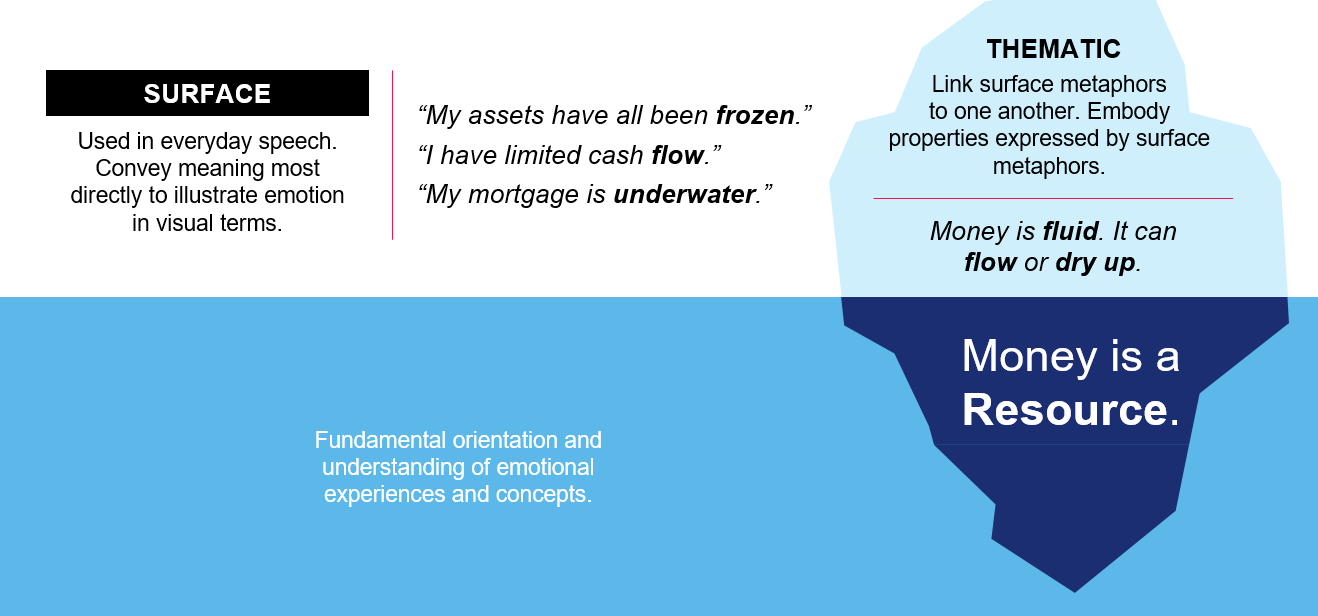
Humans can understand an intangible concept using more tangible metaphors to explain. Thematic metaphors link the surface metaphors to one another. In this example, metaphors around money can be linked to the idea that money is fluid. It can flow and dry up. The fundamental understanding is that money is a resource.
HOW IT WORKS
The exercise works by posing a question and having the respondent answer by selecting an image, then they describe and interpret it for us. This leaves three different datasets available for analysis.
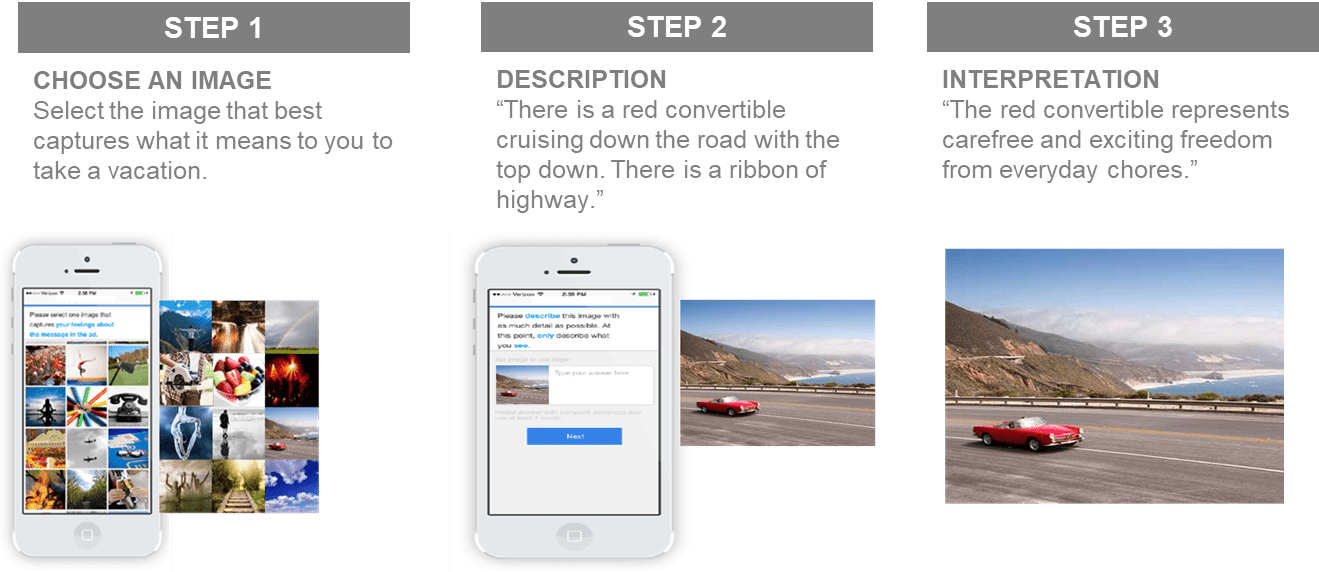
An example of one of the attributes that MDRG examined was imagery representing trust and confidence associated with having a reliable partner in their entertainment world. Respondents selected many different images representing this attribute and laddered up to ideas around connection. The finding is a deep metaphor and what connection really means is a feeling of belonging or exclusion.
This was explained in 2 ways:
- Trust, that the brand is going to include me in product updates and communicate any sort of disruptions.
- Also, belonging and being a part of a broader community of customers.

EMBEDDING ACROSS THE ORGANIZATION: ACTIVATION BOOKLETS
To socialize these findings and big ideas, DISH conceived the concept of brand booklets. Working with MDRG to consolidate the findings in consumer-friendly language, the work is easily shared with internal and external partners and influences how the brand is perceived, in a tangible way.
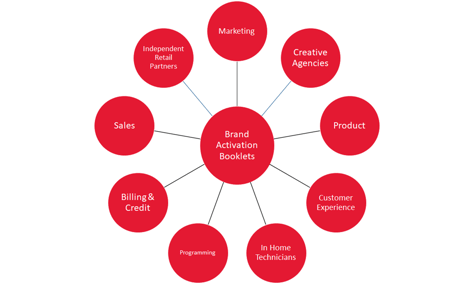
The combination of DISH's leadership, BERA's Brand Love formula, and MDRG's Whole Mind Approach to market research lead to an award-winning study that was designed to influence the bottom line by influencing the organizations' understanding of the brand.
Watch the Insights Association presentation to learn more.
Are you eager to stay ahead of the curve in your industry? Sign up for our monthly insights email and gain exclusive access to valuable market research, industry trends, and actionable recommendations delivered directly to your inbox.
Topics from this blog: Consumer Insights System 1 Methodology Qualitative Research